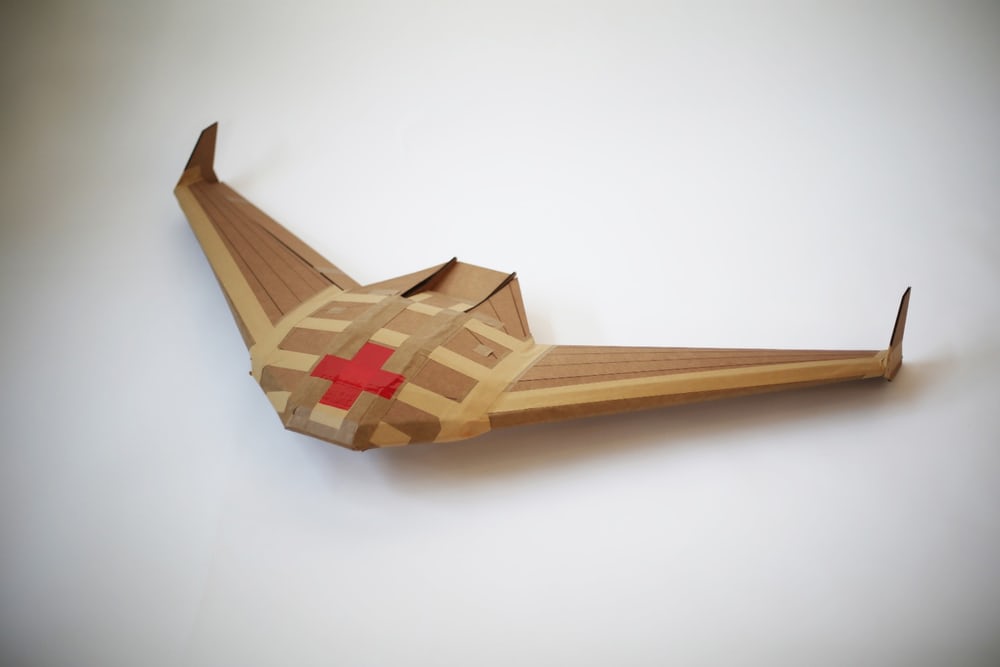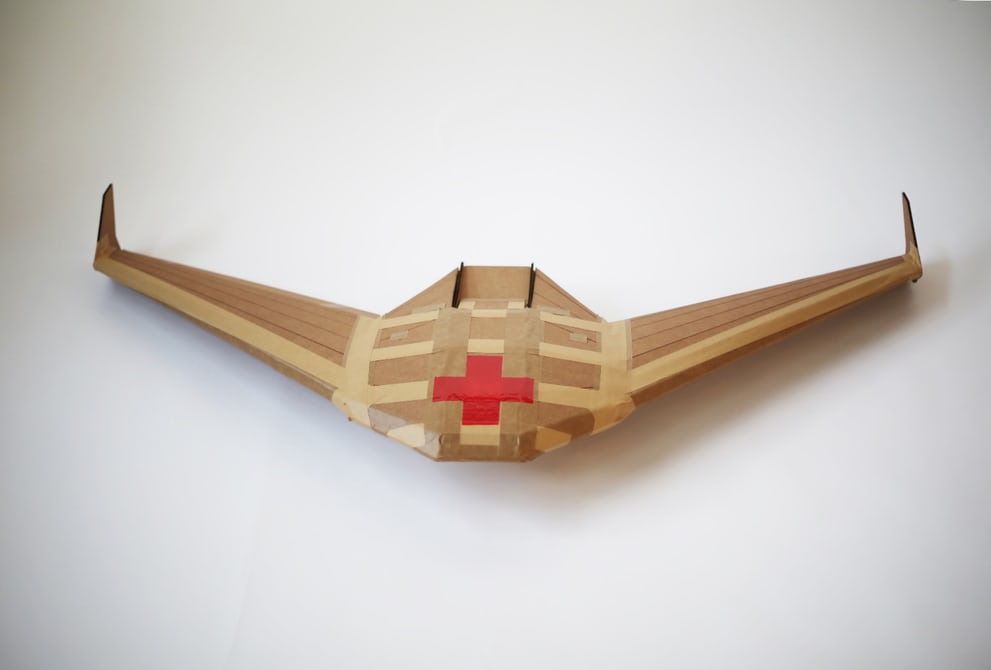
Unmanned aerial vehicles, or drones, have tremendous potential to deliver emergency supplies to remote or disaster-struck regions. However, they are expensive to mass produce and often require special pads to launch and land safely. Additionally, the need for the aircraft to maintain enough battery life to return, cuts the delivery distance to half. But these issues may be history, thanks to an affordable and disposable drone that is designed for a one-way journey.
The recently unveiled APSARA (aerial platform supporting autonomous resupply actions) drone prototype is the brainchild of San Francisco-based Otherlab. The R&D firm was commissioned to create the unmanned vehicle by DARPA, the United States military’s experimental technology arm as part of the Inbound, Controlled, Air-Releasable, Unrecoverable Systems (ICARUS) program. The project aims to develop aircraft that “can make precise deliveries of critical supplies and vaporize into thin air.”

The drones, which measure about a meter in size, are made almost entirely of cardboard and bound together with packing tape. Designed to be launched from other aircraft and glide, the drones have no propellers — just a GPS autopilot, small servos for navigation and a disposable battery. When dropped from a cargo plane, APSARA drones can travel up to 150 kilometers and land within 10-meters of the designated destination. The developers say to get to the maximum distance, the drones should be dropped from an altitude of 35,000 feet or higher. Though the aircraft can currently carry loads of only 2.2 pounds, Otherlab researchers are confident they will be able to increase the payload ten-fold, to 22 pounds, in future models. Since the drones are designed for single-use, a crash landing is not just acceptable, but preferred, given that it speeds up the cardboard frame’s disintegration process — as long as it doesn’t affect the precious cargo, of course!
The best thing is APSARA’s straightforward assembly process that takes only about 30 minutes. Mikell Taylor, the project team lead at Otherlab, says, “It’s like the Ikea of drones: It comes as a flat-pack thing with a bunch of sheets of cardboard that’s been laser cut and scored, and you can fold it up when you’re ready to go.”

However, though the cardboard frame meets DARPA’s requirement to “vanish,” the small electronics fitted on the aircraft are not biodegradable. To change that, Otherlab hopes to borrow some of the technology developed for DARPA’s Vanishing Programmable Resources (VAPR) project. VAPR funded research to build “green” self-destructing electronics to prevent high-tech military equipment from falling into enemy hands. Future APSARA drones may also be crafted from mycelium, a mushroom-based product that has a similar texture to cardboard but decomposes at a much faster rate.
Though the cost of these single-use aircraft has not been revealed, Taylor promises they will be “very, very cheap.” If that’s the case the incredible drones will make delivery of medicines, blood, vaccines, batteries, communication devices, and other emergency supplies to unreachable areas a cinch!
Resources: recode.net, trendhunter.com, newatlas.com, spectrum.ieee.org